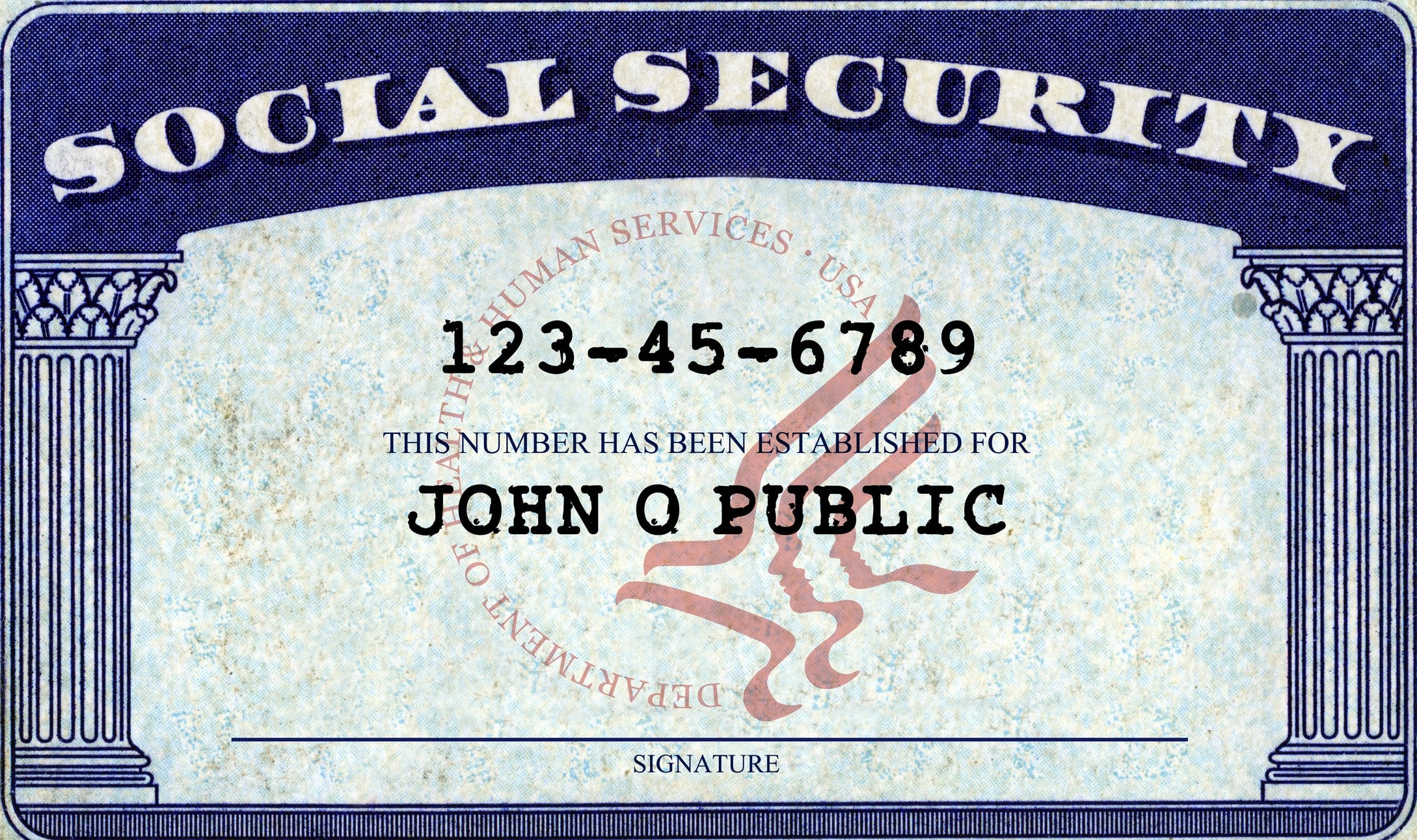Welcome to the ultimate guide on navigating the US immigration process and obtaining an Employment Authorization Document (EAD) and Social Security Number (SSN). Whether you’re a foreign national planning to work in the United States or an employer seeking to hire international talent, understanding the ins and outs of the immigration system is essential.
In this comprehensive guide, we will walk you through the step-by-step process of obtaining an EAD and SSN, providing valuable insights and expert advice to help you navigate the complexities of immigration law. From determining eligibility and filling out the necessary forms to preparing for interviews and dealing with potential roadblocks, we’ve got you covered.
Our goal is to empower you with the knowledge and resources needed to successfully navigate the US immigration process, empowering you to achieve your professional goals and aspirations. So, whether you’re a foreign national seeking employment, an entrepreneur starting a business in the US, or an employer hiring international talent, let’s dive in and embark on this transformative journey together.
Understanding the importance of an Employment Authorization Document (EAD)
An Employment Authorization Document (EAD) is a crucial document for foreign nationals seeking employment in the United States. It serves as proof that an individual is authorized to work in the country. Without an EAD, it is illegal for a foreign national to engage in any form of employment, including self-employment.
Obtaining an EAD provides numerous benefits. It opens up a wide range of employment opportunities, allows for the establishment of credit history, and provides access to various government programs and benefits. Additionally, an EAD is often a prerequisite for obtaining other essential documents, such as a Social Security Number (SSN).
To be eligible for an EAD, individuals must meet certain criteria. Let’s explore the eligibility requirements in the next section.
Eligibility requirements for obtaining an EAD
To qualify for an EAD, individuals must fall into specific categories outlined by the United States Citizenship and Immigration Services (USCIS). These categories include, but are not limited to, the following:
1. Asylum seekers and refugees: Individuals who have been granted asylum or refugee status in the United States are eligible to apply for an EAD.
2. Spouses of certain visa holders: Spouses of H-1B, L-1, and E-1/E-2 visa holders may be eligible for an EAD.
3. DACA recipients: Individuals who have been granted Deferred Action for Childhood Arrivals (DACA) status may apply for an EAD.
4. F-1 students: Certain F-1 students, such as those experiencing severe economic hardship or engaging in optional practical training (OPT), may be eligible for an EAD.
5. Adjustment of status applicants: Foreign nationals who have applied for adjustment of status to become lawful permanent residents may be eligible for an EAD while their application is pending.
These are just a few examples of the categories that may qualify for an EAD. It’s important to consult the USCIS website or seek professional assistance to determine your specific eligibility.
Now that we’ve discussed the eligibility requirements, let’s move on to the next section, which outlines the step-by-step process of applying for an EAD.
Steps to apply for an EAD
The process of obtaining an EAD involves several steps, each requiring careful attention to detail and adherence to specific guidelines. Here is a step-by-step guide to help you navigate the application process:
1. Determine eligibility: As discussed earlier, it is essential to determine your eligibility for an EAD based on your immigration status or category. This will ensure that you meet the necessary requirements before proceeding with the application.
2. Gather required documents: Before starting the application, gather all the necessary documents. These typically include a completed Form I-765 (Application for Employment Authorization), supporting documentation proving eligibility, and any additional documents specified by the USCIS.
3. Complete Form I-765: Fill out Form I-765 accurately and legibly. Be sure to provide all the required information, including your personal details, immigration status, and employment category. Any mistakes or omissions can lead to delays or rejection of your application.
4. Prepare supporting documentation: Compile the supporting documents required for your specific eligibility category. This may include copies of your passport, visa, I-94 arrival/departure record, and any other relevant documents. Make sure to follow the USCIS guidelines regarding document formatting and submission.
5. Submit your application: Once you have completed Form I-765 and gathered all the necessary documents, submit your application to the USCIS. Ensure that you include the correct filing fee, payable by check or money order, unless exempted.
6. Attend biometrics appointment: If required, you will be scheduled for a biometrics appointment, where your fingerprints and photograph will be taken. This step is crucial for identity verification and background checks.
7. Wait for processing: After submitting your application and attending the biometrics appointment, the USCIS will process your application. The processing times vary and can take several months. You can check the USCIS website for estimated processing times.
8. Receive your EAD: Once your application is approved, you will receive your EAD in the mail. Review it carefully for any errors or discrepancies. Your EAD will contain important information such as your name, photograph, and employment category.
By following these steps diligently and ensuring all requirements are met, you increase your chances of a successful EAD application. However, it’s important to be aware of common challenges that applicants may face. We’ll cover these challenges and provide tips for a successful EAD application in the next section.
Common challenges and tips for a successful EAD application
While the EAD application process may seem straightforward, various challenges can arise along the way. Understanding these challenges and implementing the following tips can significantly increase your chances of a successful EAD application:
1. Incomplete or inaccurate information: Ensure that all information provided on the application forms is accurate and up-to-date. Double-check your forms and supporting documents for any errors or omissions.
2. Missing supporting documents: Carefully review the USCIS guidelines and requirements for supporting documentation. Failure to provide the necessary documents can result in delays or rejection of your application. Keep copies of all documents submitted for your records.
3. Improper fee payment: If a filing fee is required, make sure to include the correct amount with your application. Double-check the USCIS website for the most up-to-date fee information and payment instructions.
4. Failure to meet eligibility criteria: Thoroughly understand the eligibility criteria for your specific category. Ensure that you meet all the requirements before applying for an EAD. Seek professional advice if you have any doubts or questions.
5. Missing biometrics appointment: If you are scheduled for a biometrics appointment, make sure to attend it as scheduled. Missing the appointment can significantly delay the processing of your application.
6. Failure to track application status: Keep track of your application status by using the USCIS online tracking system. This will allow you to check the progress of your application and address any issues or requests for additional information promptly.
By being aware of these common challenges and following the tips provided, you can navigate the EAD application process more effectively and increase your chances of success. Once you have obtained your EAD, the next important step is to apply for a Social Security Number (SSN). Let’s explore the significance of an SSN for immigrants in the next section.

The significance of a Social Security Number (SSN) for immigrants
A Social Security Number (SSN) is a unique nine-digit identification number issued by the Social Security Administration (SSA). It serves as a vital record-keeping tool for individuals living and working in the United States. For immigrants, an SSN holds significant importance and provides various benefits, including:
1. Employment authorization: An SSN is necessary for legally working in the United States. Employers require an SSN for tax purposes and to report wages to the government.
2. Access to government benefits: An SSN enables immigrants to access various government programs and benefits, such as healthcare, retirement benefits, and social services.
3. Credit history and financial services: An SSN is essential for establishing a credit history in the United States. Without an SSN, it can be challenging to obtain loans, credit cards, or rent an apartment.
4. Identification purposes: An SSN serves as a form of identification and is often required when opening bank accounts, applying for a driver’s license, or conducting other official transactions.
Now that we understand the significance of an SSN, let’s delve into the process of applying for one.
How to apply for a Social Security Number (SSN)
Applying for a Social Security Number (SSN) requires following a specific process outlined by the Social Security Administration (SSA). Here are the general steps to apply for an SSN:
1. Obtain an eligible status: To apply for an SSN, you must have an eligible status, such as being authorized to work in the United States. Your EAD serves as proof of eligibility.
2. Gather required documents: Collect the necessary documents for your SSN application. These typically include your EAD, passport, visa, I-94 arrival/departure record, and any other supporting documents requested by the SSA.
3. Complete the SS-5 form: Fill out Form SS-5 (Application for a Social Security Card) accurately and legibly. Provide all the required information, including your personal details, immigration status, and employment information.
4. Submit your application: Submit your completed SS-5 form, along with the required documents, to your nearest Social Security Administration office. You may need to schedule an appointment or visit during specified hours.
5. Attend an interview: In some cases, you may be required to attend an interview at the Social Security Administration office. This interview is conducted to verify your identity and eligibility for an SSN.
6. Wait for processing: The processing time for an SSN application can vary. Once your application is approved, the SSA will mail your Social Security card to the address provided on your application.
It’s important to note that the specific requirements and procedures for applying for an SSN may vary based on your individual circumstances. It’s advisable to consult the SSA website or contact your local Social Security Administration office for detailed information.
Documents required for SSN application
When applying for a Social Security Number (SSN), certain documents are typically required to support your application. These documents serve as proof of your identity, immigration status, and eligibility for an SSN. Here are the common documents you may need:
1. EAD: Your Employment Authorization Document (EAD) is a crucial document that demonstrates your eligibility to work in the United States.
2. Passport: A valid passport serves as proof of your identity and foreign nationality.
3. Visa: Depending on your immigration status, you may need to provide a copy of your valid visa.
4. I-94 arrival/departure record: The I-94 record confirms your authorized period of stay in the United States.
5. Birth certificate: A birth certificate may be required to verify your date of birth and place of birth.
6. Marriage certificate: If applicable, a marriage certificate may be necessary to prove your marital status.
These are just a few examples of the documents you may need for your SSN application. It’s essential to review the specific requirements outlined by the Social Security Administration (SSA) and gather all the necessary documents before submitting your application.
Now that we’ve covered the process of applying for an SSN and the required documents, let’s move on to the next section, which discusses processing times and receiving your EAD and SSN.
Processing times and receiving your EAD and SSN
The processing times for Employment Authorization Documents (EADs) and Social Security Numbers (SSNs) can vary depending on various factors, including the volume of applications and any additional processing requirements. Generally, EAD processing times range from a few months to several months.
To check the status of your EAD application, you can use the USCIS online tracking system or contact the USCIS directly. It’s important to note that contacting the USCIS for status inquiries should be done only if your application has been pending for an extended period or if you have not received any updates within the estimated processing time.
Once your EAD application is approved, the USCIS will mail your EAD to the address provided on your application. Review the document carefully for any errors or discrepancies. Your EAD will contain important information, including your name, photograph, employment category, and validity period.
Regarding the Social Security Number (SSN), processing times can also vary, but they are generally shorter compared to EAD processing times. The Social Security Administration (SSA) will mail your Social Security card to the address provided on your application once your application is approved.
It’s crucial to ensure that your mailing address is accurate and up-to-date to avoid any delays or issues with receiving your EAD and SSN. Notify the USCIS and SSA promptly if there are any changes to your address.
Conclusion and additional resources for navigating the US immigration process
Congratulations! You have now reached the end of our ultimate guide on navigating the US immigration process and obtaining an Employment Authorization Document (EAD) and Social Security Number (SSN). We hope this comprehensive guide has provided you with valuable insights and expert advice to successfully navigate the complexities of the immigration system.
Remember, obtaining an EAD and SSN are essential steps for foreign nationals seeking employment in the United States. By understanding the eligibility requirements, following the application process diligently, and being aware of common challenges, you can increase your chances of a successful application.
If you require further information or assistance, we recommend visiting the official websites of the United States Citizenship and Immigration Services (USCIS) and the Social Security Administration (SSA). These websites provide detailed information, forms, and resources to help you navigate the immigration process smoothly.
We wish you the best of luck in your journey to obtaining an EAD and SSN. May these documents open doors to new opportunities and empower you to achieve your professional goals and aspirations in the United States.






